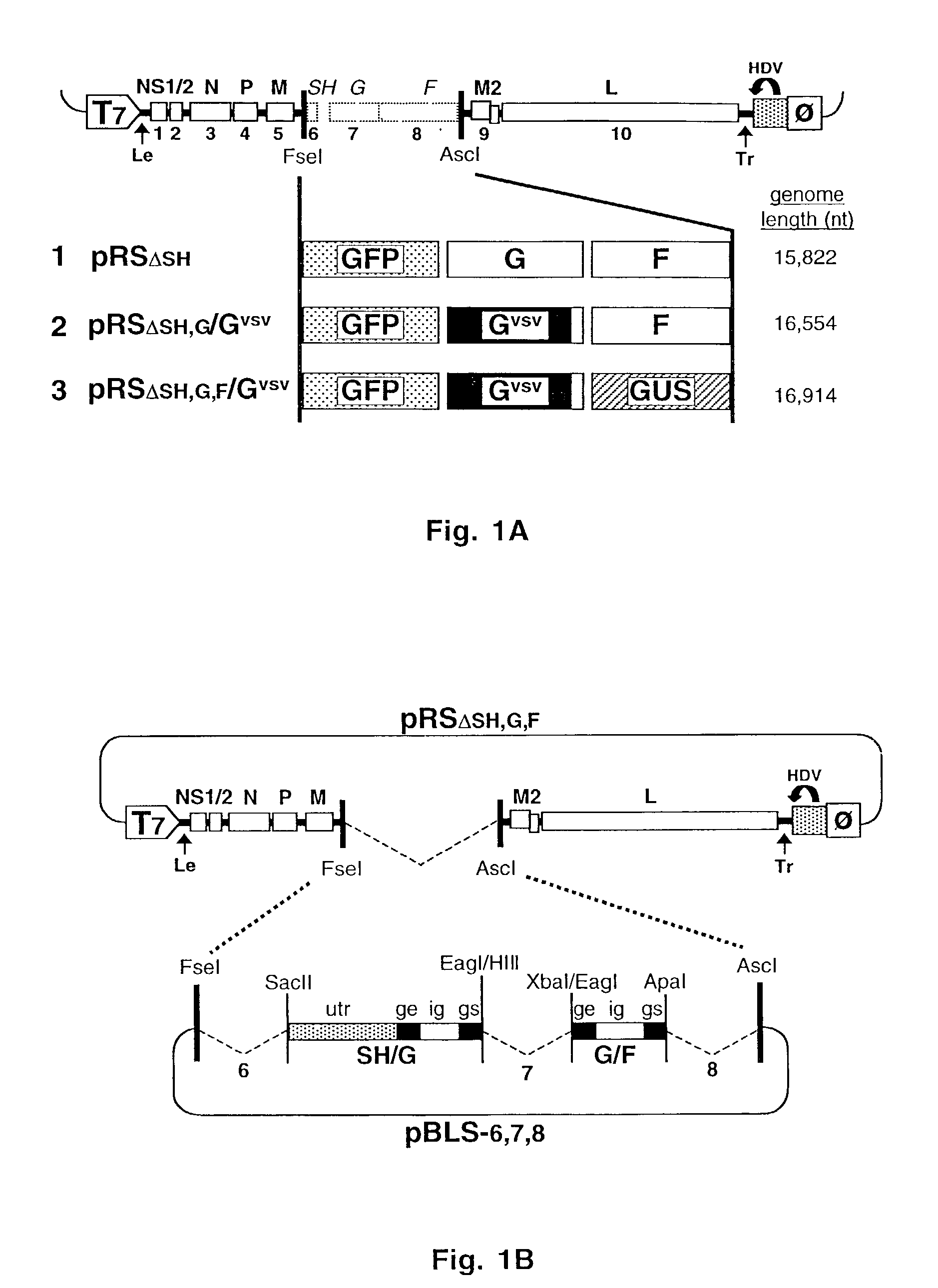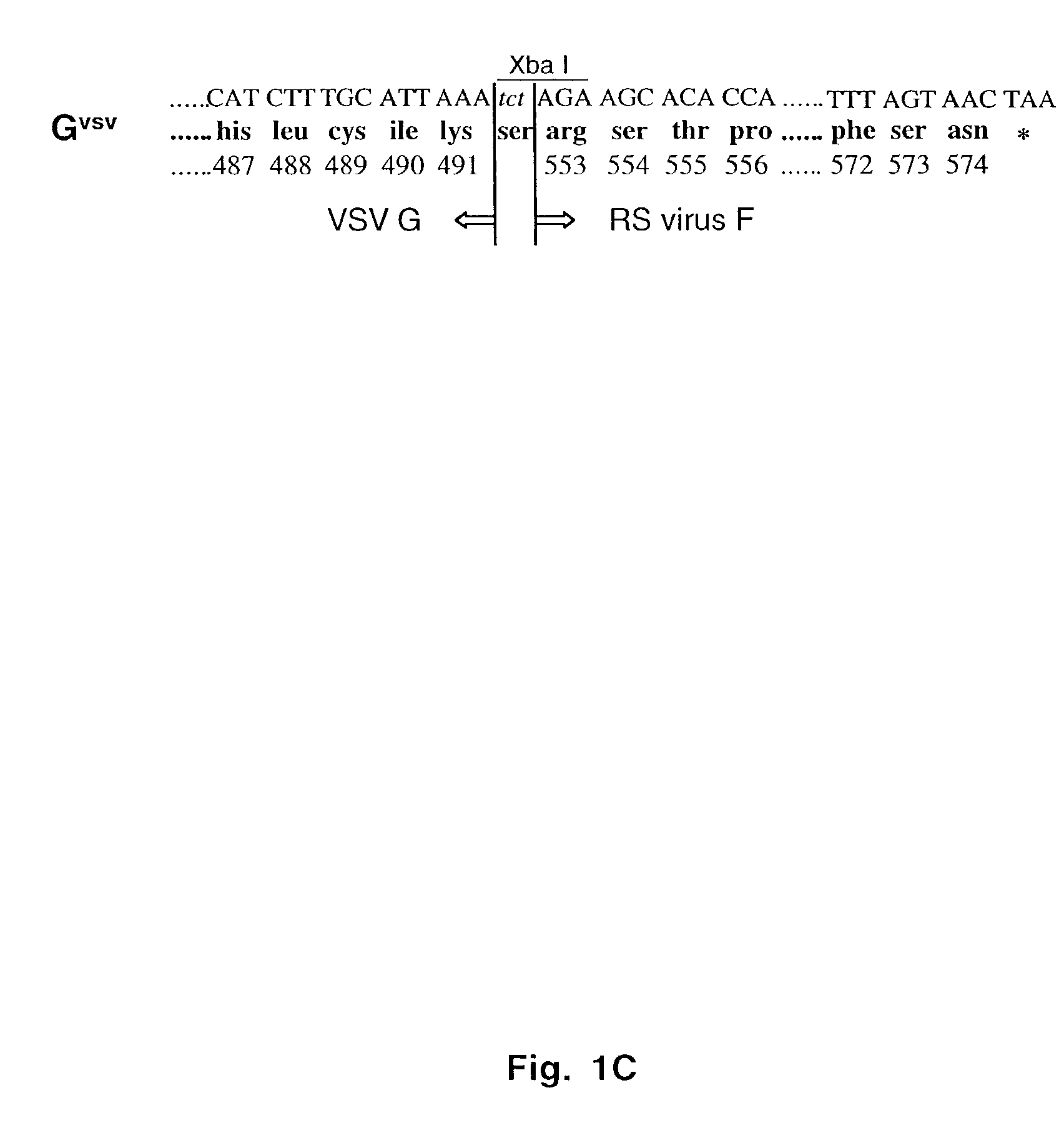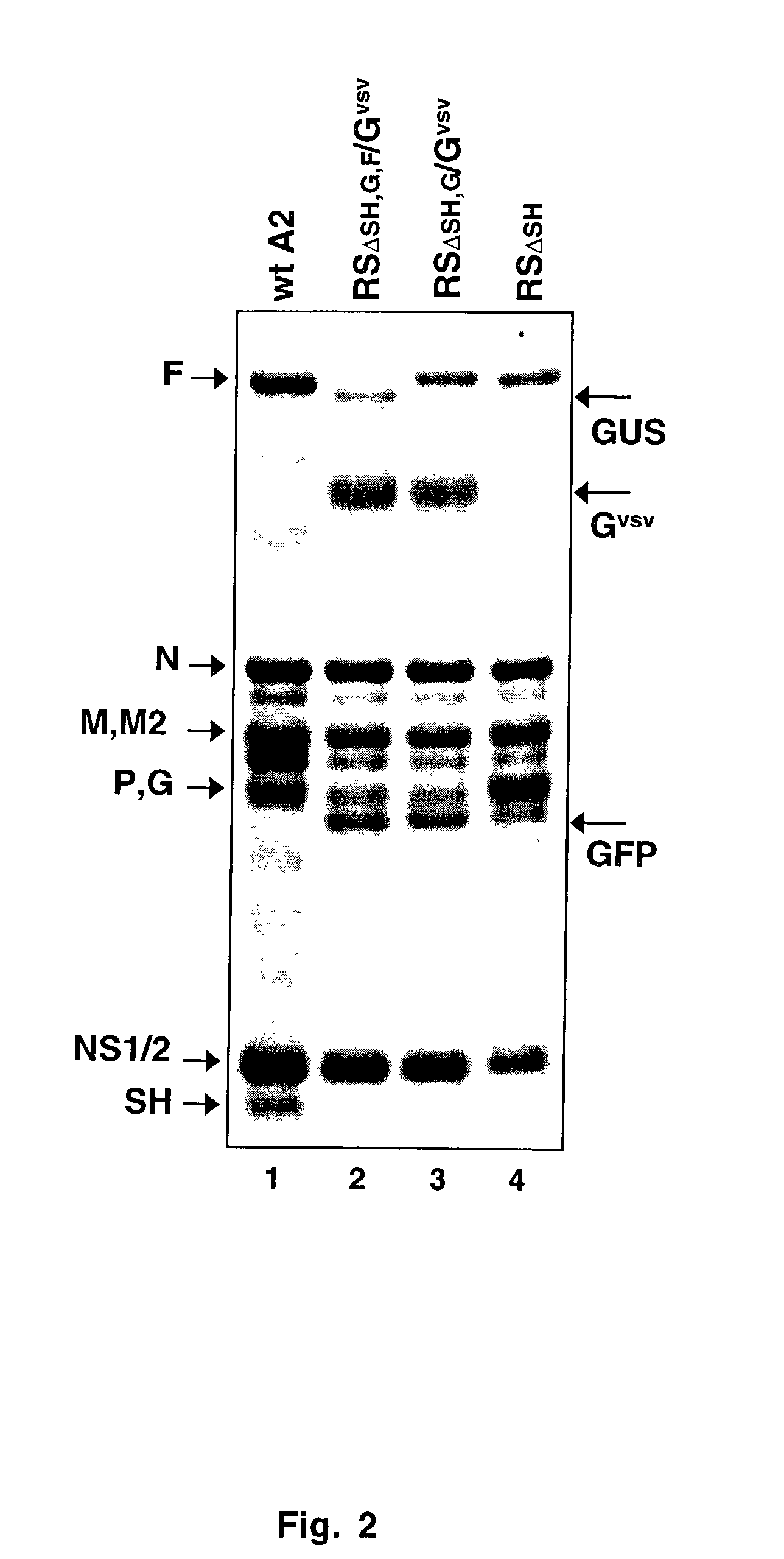Recombinant respiratory syncytial viruses with deleted surface glycoprotein genes and uses thereof
a technology of surface glycoprotein and recombinant respiratory syncytial virus, which is applied in the field of molecular virology and vaccine development, can solve the problems of respiratory syncytial virus disease prevention and treatment, significant challenge, and significant impairment of the replication of g-deleted viruses in hep-2 cells, mice, cotton rats,
- Summary
- Abstract
- Description
- Claims
- Application Information
AI Technical Summary
Benefits of technology
Problems solved by technology
Method used
Image
Examples
example 1
Cells And Antibodies
[0069]Two cell types acquired from American Type Culture Collection (ATCC) were used: HEp-2 and Vero 76 cells. The A2 strain of RS virus was used as a comparison to the engineered viruses. Infections were carried out in standard growth media containing 5% FBS for 1.5 h at 37° C.
[0070]Monoclonal antibodies Mab 19 and Mab 6 were kindly provided by Geraldine Taylor, and MAb L9 by Ed Walsh. The humanized anti-F MAb Synagis was acquired from MedImmune, Inc. The anti-VSIV G Indiana and anti-Vesicular stomatitis New Jersey virus (VSNJV) antibodies were mouse ascitic fluids acquired from ATCC.
example 2
Construction of Chimeric Protein Gvsv
[0071]A truncated VSIV G Indiana ORF (amino acid 1 to 491) flanked by a 3′ XbaI restriction site was generated using PCR. Nucleotides encoding amino acids 553 to 574 of human respiratory syncytial virus F protein (the cytoplasmic tail domain as predicted by hydrophobicity profiles, MacVector 7.0, Oxford Molecular) were amplified using PCR creating an XbaI site that overlapped amino acid 553. The engineered XbaI site was used to ligate the two fragments resulting in a chimeric protein, Gvsv (see FIG. 1C).
example 3
Construction of Viral cDNAs, and Recovery of Engineered Human Respiratory Syncytial Virus with Altered Glycoprotein Gene Content
[0072]A cDNA of the prototype A2 strain of human respiratory syncytial virus (HRSV) was generated by RT-PCR of HRSV RNAs and cloned into plasmid pBluescript (Stratagene) using convential cloning techniques. A T7 promotor followed by three guanosine residues to enhance transcription and a T7 terminator preceded by the hepatitis delta virus (HDV) ribozyme sequence were cloned on either side of the cDNA. Consequently, in the presence of the T7 polymerase, a (+) sense RNA is transcribed. From this transcript, viral genomic RNAs with precise 3′ and 5′ ends can be replicated by the viral polymerase, initiating an authentic viral infection (Pattnaik et al., 1992; Conzelmann and Schnell, 1994; Whelan et al., 1995).
[0073]Using conventional cloning techniques, the above described cDNA-containing plasmid was modified by deleting the area from the translation initiatio...
PUM
| Property | Measurement | Unit |
|---|---|---|
| Hydrophobicity | aaaaa | aaaaa |
| Fluorescence | aaaaa | aaaaa |
Abstract
Description
Claims
Application Information
 Login to View More
Login to View More - R&D
- Intellectual Property
- Life Sciences
- Materials
- Tech Scout
- Unparalleled Data Quality
- Higher Quality Content
- 60% Fewer Hallucinations
Browse by: Latest US Patents, China's latest patents, Technical Efficacy Thesaurus, Application Domain, Technology Topic, Popular Technical Reports.
© 2025 PatSnap. All rights reserved.Legal|Privacy policy|Modern Slavery Act Transparency Statement|Sitemap|About US| Contact US: help@patsnap.com



